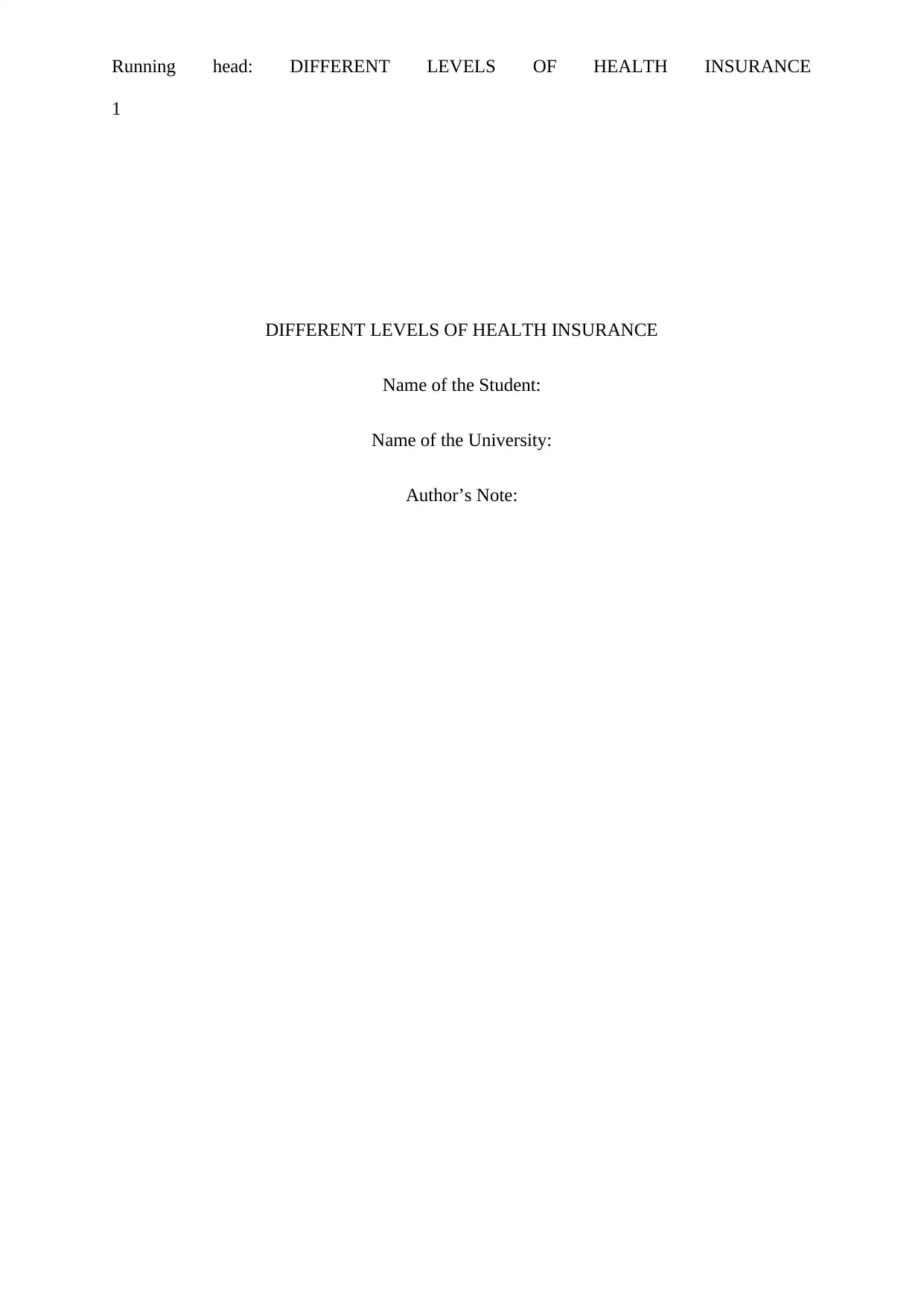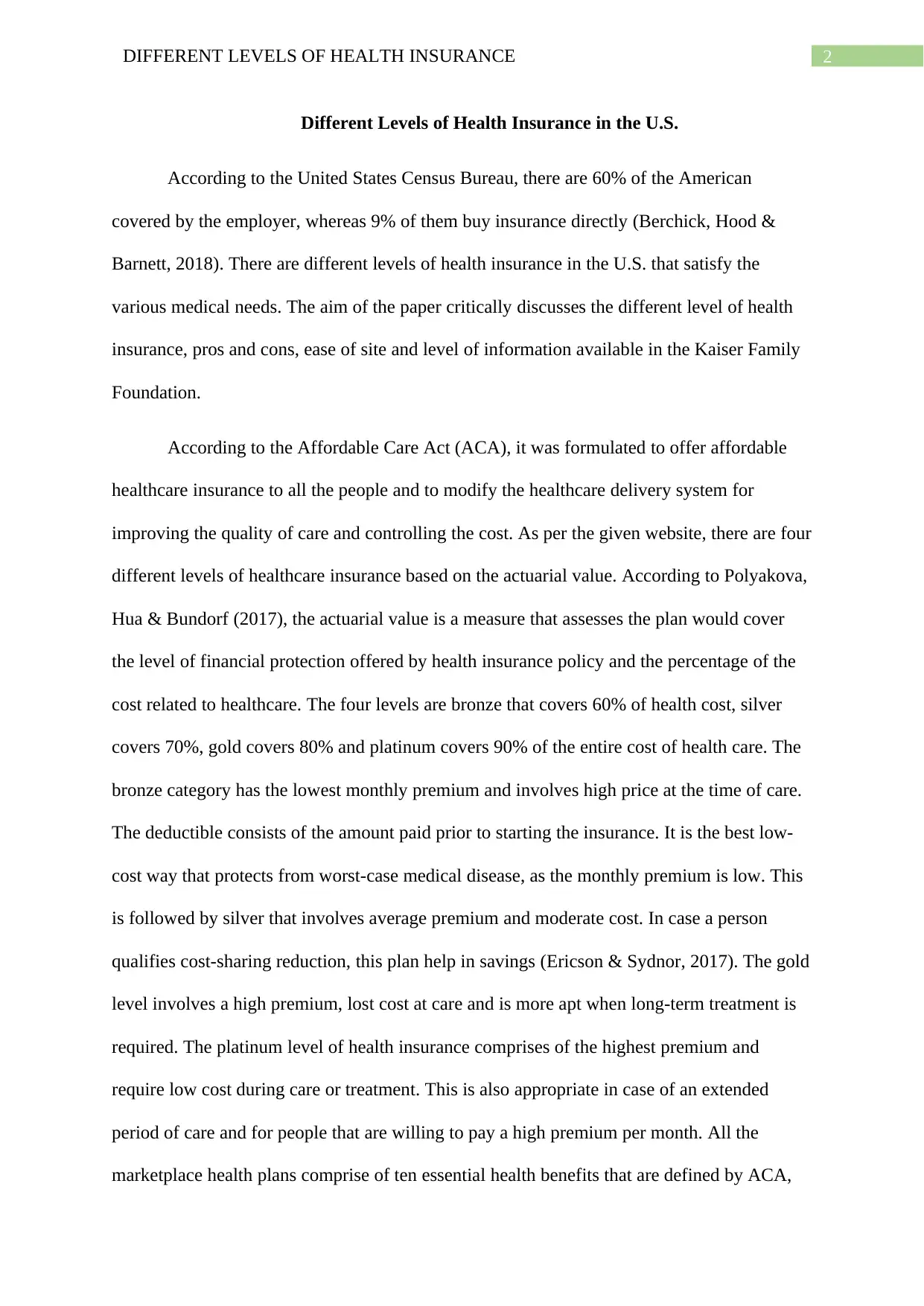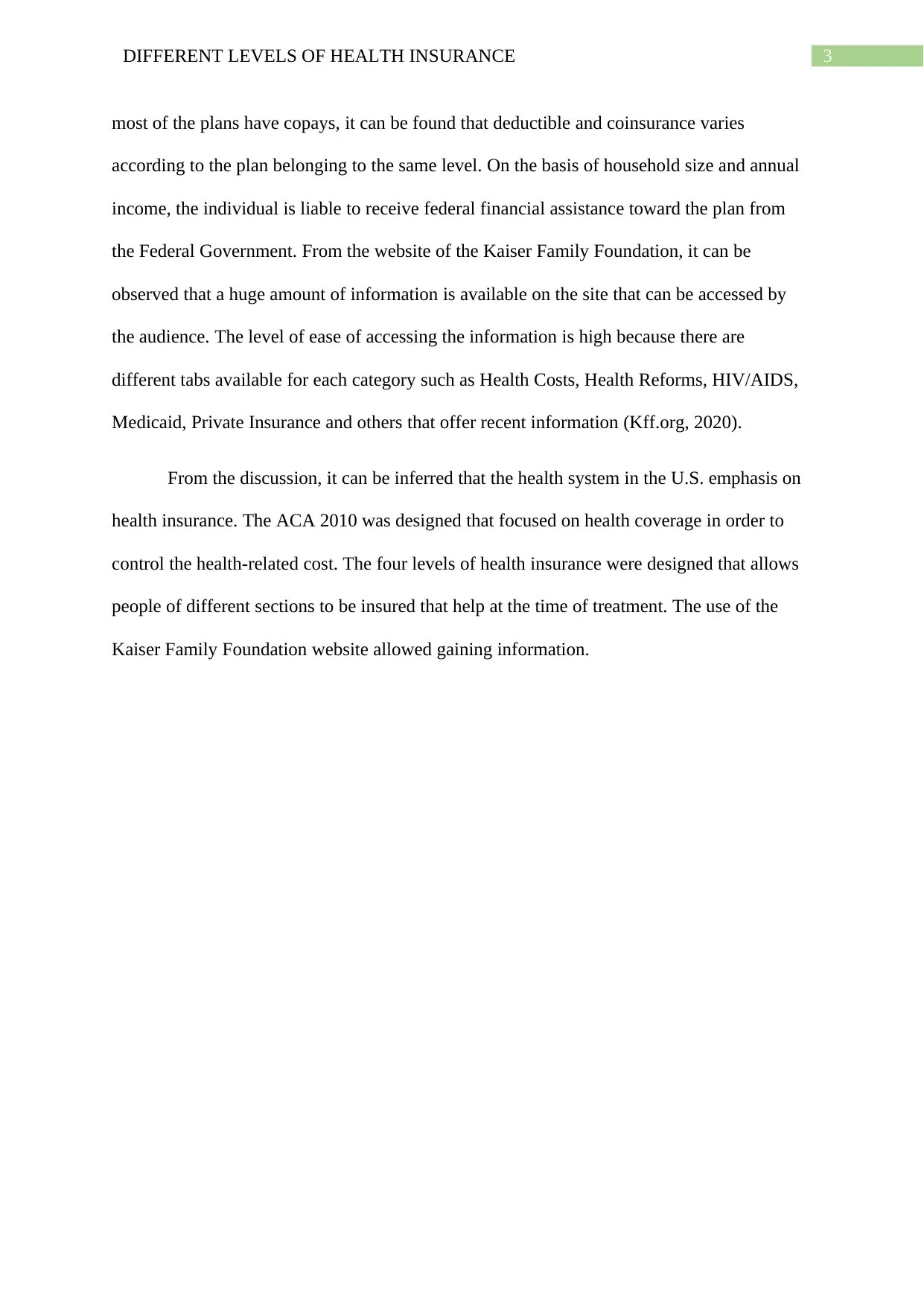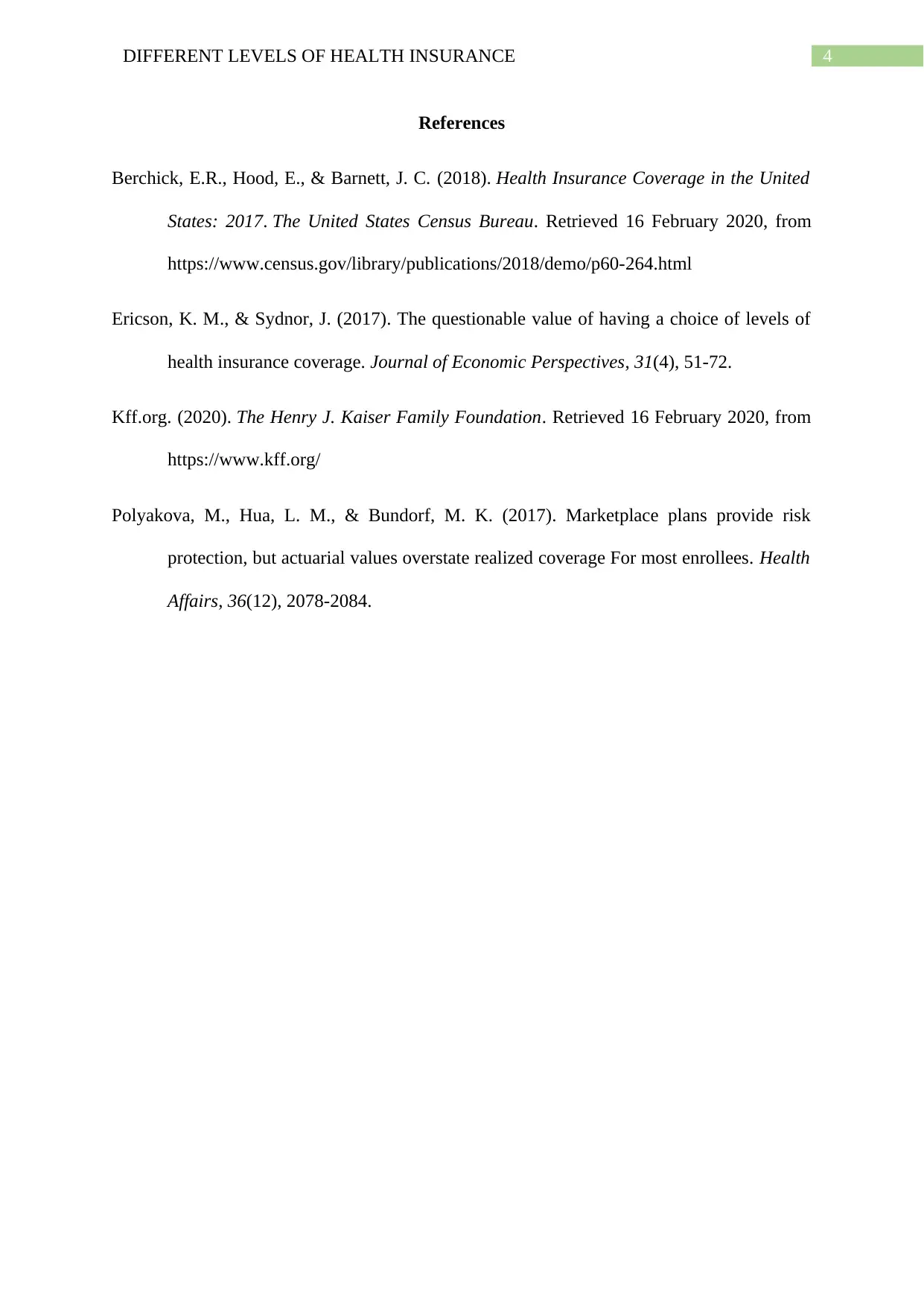Analysis of Different Levels of Health Insurance in the USA
VerifiedAdded on 2022/08/18
|4
|799
|12
Essay
AI Summary
This essay delves into the diverse landscape of health insurance in the United States, examining the different levels of coverage available to individuals. It begins by highlighting the prevalence of employer-sponsored insurance and the significance of the Affordable Care Act (ACA) in shaping the healthcare delivery system. The core of the paper focuses on the four main tiers of health insurance: bronze, silver, gold, and platinum, each characterized by varying actuarial values and cost-sharing arrangements. The bronze level, offering the lowest premiums, is contrasted with the platinum level, which has the highest premiums but the lowest out-of-pocket expenses during care. The essay also references the Kaiser Family Foundation website as a valuable source of information, emphasizing its user-friendly interface and the availability of detailed insights into health costs, reforms, and specific health issues. By analyzing these different levels of insurance, the essay provides a comprehensive overview of the US healthcare system, emphasizing the importance of health coverage and the role of ACA in managing healthcare costs.
1 out of 4











![[object Object]](/_next/static/media/star-bottom.7253800d.svg)